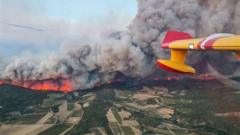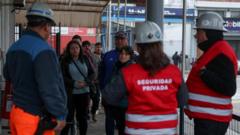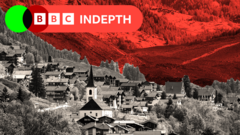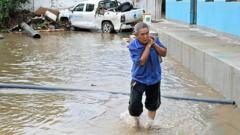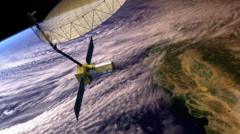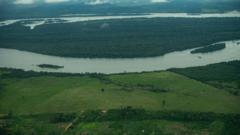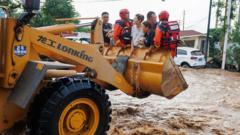In a groundbreaking study, scientists reveal that fog harvesting could be a game-changer for water supply in some of the world’s driest areas, specifically targeting urban slums in Alto Hospicio, Chile.
Fog Harvesting: A Promising Solution for Water-Stressed Cities in Chile
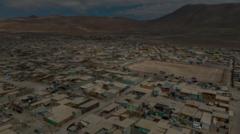
Fog Harvesting: A Promising Solution for Water-Stressed Cities in Chile
Researchers explore fog harvesting as a sustainable water source for arid city residents deprived of clean water.
With a familiar struggle against dwindling water supplies, the residents of Alto Hospicio, nestled in the Atacama Desert, often depend on truck deliveries for their drinking water, which can be scarce due to an annual rainfall average of less than 5mm. However, researchers led by Dr. Virginia Carter Gamberini from Universidad Mayor have discovered that fog can serve as a viable water source for the city's marginalized populations.
During their investigation, the team implemented a simple yet effective technique for harvesting water from fog. This involves setting up a fine mesh network that captures water droplets from moisture-laden clouds as they pass through. Once collected, the water is directed into pipes and storage tanks. Small-scale experimentation has been carried out in rural regions of South and Central America, with Morocco housing one of the largest known fog water systems near the Sahara Desert.
Dr. Gamberini emphasized the potential for a "new era" of larger fog harvesting systems, which could fundamentally change the urban water supply landscape. By analyzing satellite imagery and weather patterns, the research team confirmed that the fog banks frequently rolling in from the Pacific could sustain a consistent and secure drinking water supply for the impoverished areas of Alto Hospicio. Their findings, recently published in the journal Frontiers of Environmental Science, provide a roadmap for future implementations.
The conditions in Alto Hospicio are particularly suitable for fog harvesting, as it is beset by persistent fog due to the cold waters of the Pacific interacting with warm air. The researchers calculated that 17,000 square meters of mesh could generate enough water to meet the weekly demand of 300,000 liters, which is currently being supplied via truck to local slums. Furthermore, the captured fog water could also support hydroponic agriculture, potentially yielding up to 20 kilograms of vegetables monthly.
Urgency is emphasized due to the region’s reliance on ancient underground aquifers, which are quickly depleting due to the growing urban population and various industrial demands. As such, Dr. Gamberini highlights the elegance of Chile’s coastal geography, where the ocean and mountains converge, making it a unique candidate for fog harvesting initiatives.
The ongoing development of a comprehensive "fog harvesting map" of Chile is a testament to their commitment to explore this promising avenue. "Water from the clouds," as described by Dr. Gamberini, could not only provide immediate relief to water-stressed communities but also bolster resilience against climate change challenges faced by arid cities around the globe.
During their investigation, the team implemented a simple yet effective technique for harvesting water from fog. This involves setting up a fine mesh network that captures water droplets from moisture-laden clouds as they pass through. Once collected, the water is directed into pipes and storage tanks. Small-scale experimentation has been carried out in rural regions of South and Central America, with Morocco housing one of the largest known fog water systems near the Sahara Desert.
Dr. Gamberini emphasized the potential for a "new era" of larger fog harvesting systems, which could fundamentally change the urban water supply landscape. By analyzing satellite imagery and weather patterns, the research team confirmed that the fog banks frequently rolling in from the Pacific could sustain a consistent and secure drinking water supply for the impoverished areas of Alto Hospicio. Their findings, recently published in the journal Frontiers of Environmental Science, provide a roadmap for future implementations.
The conditions in Alto Hospicio are particularly suitable for fog harvesting, as it is beset by persistent fog due to the cold waters of the Pacific interacting with warm air. The researchers calculated that 17,000 square meters of mesh could generate enough water to meet the weekly demand of 300,000 liters, which is currently being supplied via truck to local slums. Furthermore, the captured fog water could also support hydroponic agriculture, potentially yielding up to 20 kilograms of vegetables monthly.
Urgency is emphasized due to the region’s reliance on ancient underground aquifers, which are quickly depleting due to the growing urban population and various industrial demands. As such, Dr. Gamberini highlights the elegance of Chile’s coastal geography, where the ocean and mountains converge, making it a unique candidate for fog harvesting initiatives.
The ongoing development of a comprehensive "fog harvesting map" of Chile is a testament to their commitment to explore this promising avenue. "Water from the clouds," as described by Dr. Gamberini, could not only provide immediate relief to water-stressed communities but also bolster resilience against climate change challenges faced by arid cities around the globe.




